| |
The Dream of Flying |
Page 19 |
|
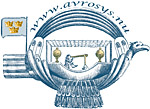 |
|
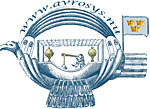 |
|
|
|
 |
|
|
|
 |
| |
Professor Charles' Globe gets attacked (1783) |
|
| |
After the Montgolfier brothers’ spectacular show a 37
years old physicist, Professor Jacques Charles (1746 – 1823)
accepted a proposal from the Academy of Sciences to duplicate - and
validate - the brothers’ experiment. But Charles has not got all
information about the flight in Annonay. The brothers wanted to keep the
gas they used as a secret. Charles believed that they had used hydrogen, a
substance - 14 times lighter than air - he knew well.
Charles started a fruitful cooperation with Jean and Anne-Marie Noël
Robert, manufacturers of measuring devices in Paris. They had
invented a rubber coating for silk that made it less permeable to
hydrogen, a problem that had made Joseph Montgolfier to abandon hydrogen
in favour for hot air.
(Text continued below the image) |
|
| |
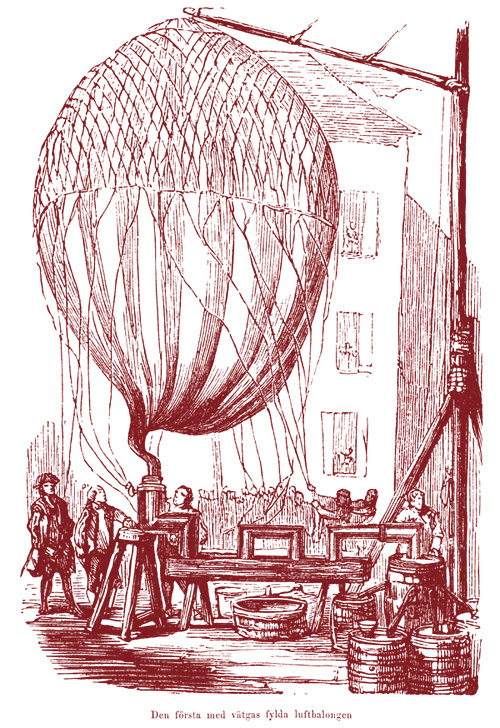 |
|
| |
|
|
| |
The Roberts made a small spherical balloon of four meters in diameter and
a volume of 33 m³. The material was silk fabric and of course treated with
their rubber coating. The filling with hydrogen started on August
the 23rd 1783 in a small yard adjacent to Roberts’ shop, but with the primitive
methods they used, it took much longer time than expected. After four days
the balloon was filled enough to rise to 30 meters. Then the balloon was
hauled down, tied by ropes to a wagon and moved to the more spacious
grounds at the Mars Field. The transport was made in the night to avoid
attracting any curious crowd. It was escorted by guards and torchbearers -
not so wise perhaps with the explosive hydrogen in the balloon.
At the Mars Field - Champ de Mars - the balloon was further filled
and prepared. At 17 o’clock on the 27th of August the balloon, now named
Globe was released and landed after 45 minutes at
Gonesse, 24 km from Paris. Probably it had made a much longer voyage if the
balloon had some kind of valve that could relive the increasing gas
pressure in the balloon as it rose into lighter air. Instead, the envelope
tore apart and much gas leaked out.
When the people at Gonesse saw the balloon coming down from the skies,
they assumed it was a monster. Together, the peasants tried to ”kill” it.
And this made them more sure that the balloon was a thing belonging to the
devil. The outsteaming gas made a hissing sound and it smelled terrible. After cutting holes in it, they took the remaining and tied it to a horse.
Then they dragged it through the fields until it was only shreds left. |
|
| |
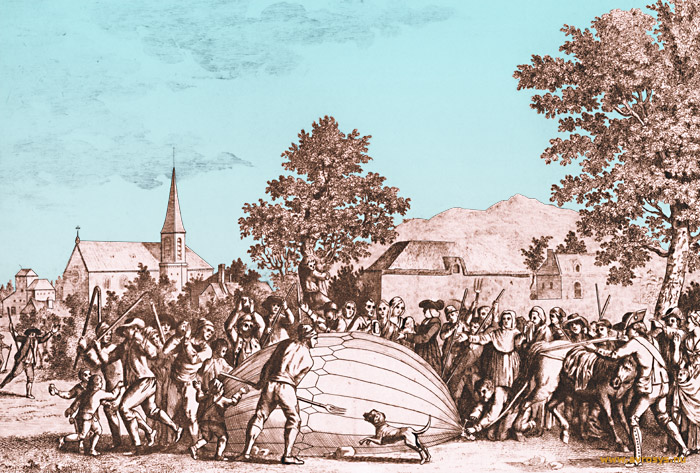 |
|
| |
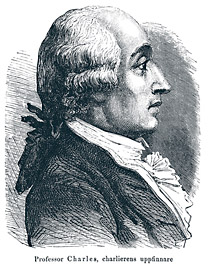 |
Left: Jacques Charles, inventor of the hydrogen balloon, also called
the Charliér. |
|
|
| |
|
|
| |
|
|
|
|
| |
| |
|
 |
 |
 |
|
|
© Lars Henriksson |
 |
Updated
2009-05-13 |
|